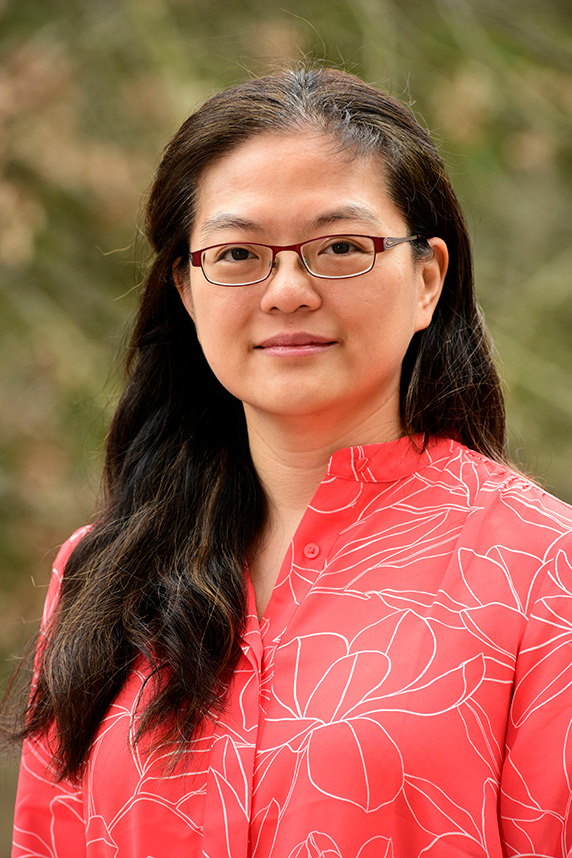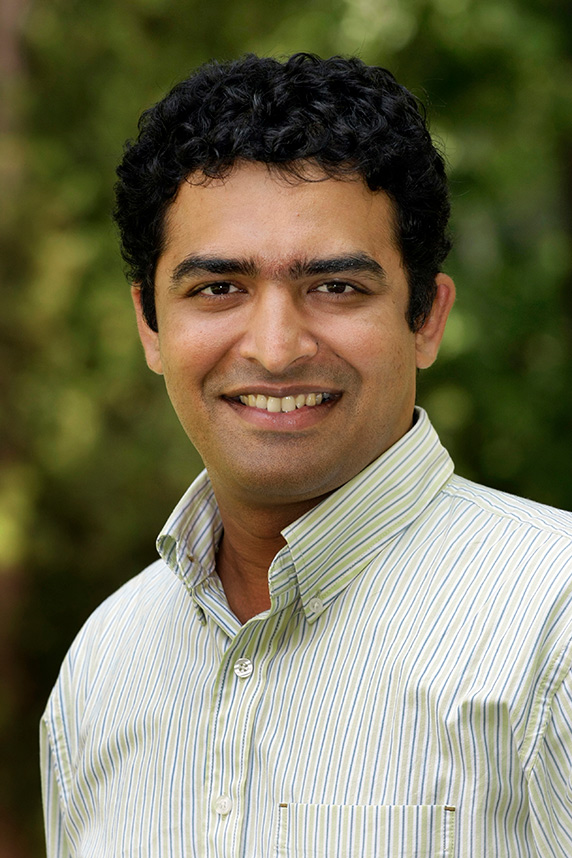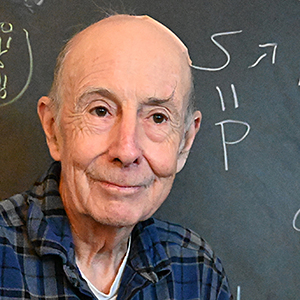Two initiatives — expanding knowledge about how some environmental agents can increase cancer risk and assessing hazards from exposures to mixtures of chemicals — headlined the Feb. 2 National Toxicology Program (NTP) Board of Scientific Counselors meeting.
 At the fall 2019 meeting of the Genetics and Environmental Mutagenesis Society, Wang described the 10 key characteristics of carcinogens. (Photo courtesy of Steve McCaw / NIEHS)
At the fall 2019 meeting of the Genetics and Environmental Mutagenesis Society, Wang described the 10 key characteristics of carcinogens. (Photo courtesy of Steve McCaw / NIEHS)Setting sights on cancer prevention
Amy Wang, Ph.D., and Arun Pandiri, Ph.D., described the Carcinogenicity Health Effects Innovation Program. It is one of three projects centered on disease-based toxicology, which is part of the Division of NTP (DNTP) research strategy. The other projects — studying how the environment influences cardiovascular health and neurodevelopmental disorders, such as autism — were the topic of the December 2020 board meeting.
“It is estimated that four out of 10 people will be diagnosed with cancer at some point in their lifetime,” said Wang, explaining the public health significance of the carcinogenicity program. “Among those who have cancer, about one out of five will die from it. Cancer is the second leading cause of death in the U.S. as well as worldwide.”
Rates of cancer cases and death have dropped significantly in recent years. Still, much work remains to improve prevention efforts and decrease disparities. For example, although the curve is sloping downward, Blacks still have the highest cancer death rate of any racial group.
“We know a lot about intrinsic [biological] risk factors, but those account for less than 30% of cancer,” Wang noted. She emphasized the importance of identifying environmental contributors, pointing out that as many as half of all cancers may be preventable.
3D organoids, cancer genetics, data sharing
Traditional DNTP cancer studies undergo rigorous peer review and result in valuable data, but it can take a while before decision-makers and the public receive such information. Pandiri said that to accelerate research and make findings more readily available, program scientists will adopt advanced testing approaches and expand collaboration with outside experts. Below are some of the program goals.
 Pandiri said that a critical aspect of the carcinogenicity program is communicating to stakeholders and the public through white papers, workshops, and social media. (Photo courtesy of Steve McCaw / NIEHS)
Pandiri said that a critical aspect of the carcinogenicity program is communicating to stakeholders and the public through white papers, workshops, and social media. (Photo courtesy of Steve McCaw / NIEHS)- Incorporate human cancer genetics research into cancer studies to boost understanding of exposures that cause tissue-specific tumors, such as early-onset colorectal cancer.
- Develop human-relevant, three-dimensional organoids for examining the mechanisms and origins of cancer. Organoids are tissue cultures that model a certain organ, such as heart or liver.
- Partner with researchers from the Wellcome Sanger Institute in the U.K., the Ramazzini Institute in Italy, TwinStrand Biosciences in the U.S., and other industry and academic partners to rapidly predict cancer hazards.
- Create a database that supports computational approaches in carcinogenicity studies and adheres to FAIR principles — findability, accessibility, interoperability, and reusability.
All mixed up
Toxicologist Cynthia Rider, Ph.D., told board members about the Combined Exposures and Mixtures Program(https://ntp.niehs.nih.gov/ntp/about_ntp/bsc/2021/february/meeting_materials/cem_bsc_508.pdf), one of three DNTP initiatives related to exposures. The other two focus on consumer products and workplace hazards.
“The reality is that we are exposed to a diversity of dynamic mixtures throughout our days,” she said. These mixtures may include chemicals as well as factors such as psychosocial stress.
One goal is to prioritize mixtures research based on cancer, cardiovascular disease, and other diseases relevant to humans. That differs from approaches that tend to focus only similarities among environmental agents in their chemical structure or mechanism of action.
More than the sum of the parts
 Rider joined DNTP in 2010, after completing postdoctoral training at the U.S. Environmental Protection Agency and the Nicholas School of the Environment at Duke University. (Photo courtesy of Steve McCaw / NIEHS)
Rider joined DNTP in 2010, after completing postdoctoral training at the U.S. Environmental Protection Agency and the Nicholas School of the Environment at Duke University. (Photo courtesy of Steve McCaw / NIEHS)Another objective is to strengthen risk analysis by developing a whole-mixture testing approach and comparing results with a component-based strategy. The former analyzes toxicity of a complete mixture, whereas the latter uses data on individual agents to determine potential risk.
“Our hypothesis is that chemicals that target disparate signaling pathways [in the body] contribute cumulatively to disease development,” noted Rider.
Collaboration with the public-private Botanical Safety Consortium is just one way the new program benefits the broader toxicology community, she explained.
“We aim [to] identify underlying principles of mixtures hazards, so we are using botanicals as an example of a complex mixture to build tools that apply to other complex mixtures,” said Rider.
(Jesse Saffron, J.D., is a media relations coordinator for the NIEHS Office of Communications and Public Liaison.)









